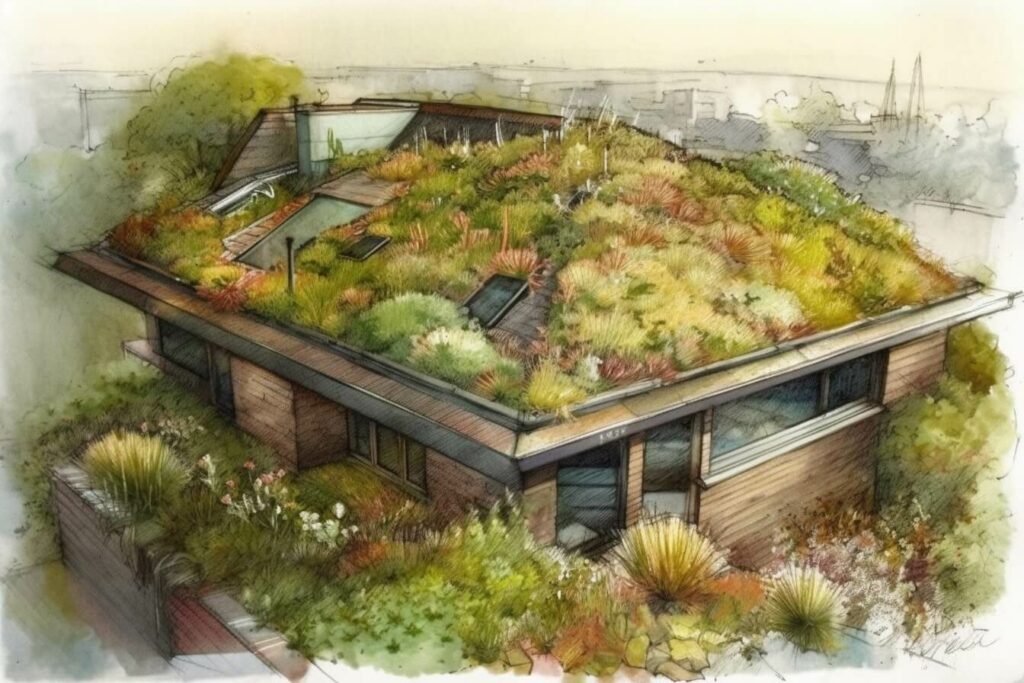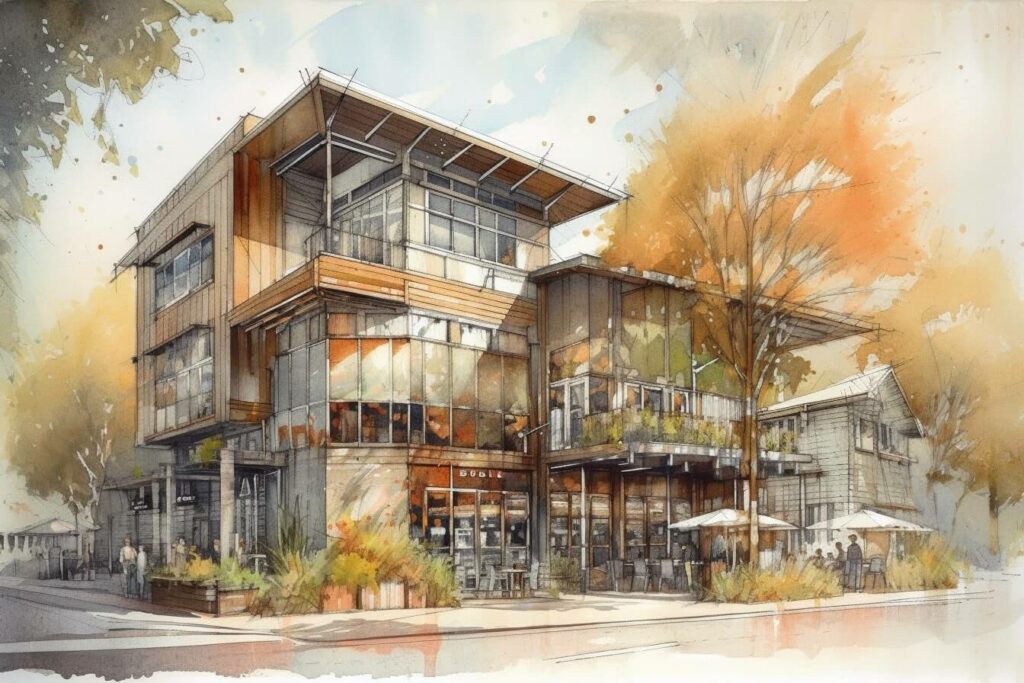




A 2-day immersion into the future of sustainable construction
The world is undergoing an ecological revolution, and the construction industry plays a vital role in this transformation. Architects and interior designers are at the forefront, shaping the future of our built environment through sustainable design practices.
With the increasing demand for eco-friendly buildings and interiors, professionals in the field must stay abreast of the latest trends, technologies, and materials.
This comprehensive guide will explore the most frequently asked questions about building sustainable and how it can benefit both the planet and your career.
What are sustainable architecture and interior design?
Sustainable architecture and interior design prioritize environmental stewardship, energy efficiency, and the responsible use of materials. These practices aim to minimize buildings’ ecological footprint while improving their occupants’ health and well-being. By incorporating sustainable design principles, architects and designers can create spaces that are not only visually appealing but also promote a greener and healthier future.
Why is sustainable design important?
The built environment significantly impacts our planet’s resources and ecosystems. Buildings account for approximately 40% of global energy consumption and contribute to greenhouse gas emissions, air pollution, and waste generation.
The sustainable design addresses these issues by reducing the environmental impact of buildings throughout their lifecycle – from construction and operation to eventual demolition or repurposing. Moreover, sustainable design can enhance occupant comfort, health, and productivity while reducing long-term operating costs.
What are the key principles of sustainable architecture and interior design to building sustainable?
The primary principles of sustainable design include the following:
- Energy efficiency: Utilizing passive design strategies, high-performance building envelopes, and energy-efficient systems to minimize energy consumption and reduce greenhouse gas emissions.
- Water conservation: Implementing water-saving fixtures, efficient irrigation systems, and rainwater harvesting to reduce potable water use and mitigate the impact on local water resources.
- Material selection: Choosing materials with low environmental impact, such as recycled, renewable, and locally sourced products, to reduce resource consumption and minimize waste.
- Indoor environmental quality: Designing spaces that promote occupant health and well-being through natural light, proper ventilation, and non-toxic materials.
- Site selection and land-use planning: Selecting sites with minimal ecological impact and integrating green infrastructure, such as green roofs and permeable paving, to enhance biodiversity and stormwater management.


What are some popular sustainable building materials and technologies?
There is a wide range of eco-friendly materials and technologies available for architects and interior designers, including:
- Cross-laminated timber (CLT): A renewable, low-carbon alternative to steel and concrete, CLT offers excellent structural performance and reduced construction time.
- Green roofs and walls: These living systems enhance biodiversity, improve air quality, and provide thermal insulation, reducing energy consumption.
- Solar panels and solar water heaters: These renewable energy systems can significantly reduce a building’s reliance on fossil fuels and lower utility bills.
- Low-VOC (volatile organic compound) paints and adhesives: These products minimize indoor air pollution and promote a healthier indoor environment.
- LED lighting: Highly energy-efficient and long-lasting, LED lights can dramatically reduce electricity consumption and maintenance costs.
Building Sustainable: How can I incorporate sustainability into my projects?
Whether you’re an architect or an interior designer, embracing sustainability in your projects involves:
- Staying informed about the latest green building trends, technologies, and materials.
- Collaborating with other professionals, such as engineers and landscape architects, to develop integrated and holistic solutions.
- Engaging with clients to understand their sustainability goals and communicate the long-term benefits of eco-friendly design.
- Seeking certification through green building ratings systems like LEED, BREEAM, or WELL to demonstrate your commitment to sustainability and differentiate your projects in the market.
- Participating in continuing education programs and attending conferences to expand your knowledge and network with other sustainability-focused professionals.








A 2-day immersion into the future of sustainable construction
How can sustainable design enhance a project’s aesthetics when building sustainable?
Sustainable design principles can be seamlessly integrated into the aesthetics of a project, creating visually stunning and environmentally responsible spaces. Some examples include:
- Natural materials, such as reclaimed wood or recycled metal, add warmth, texture, and unique character to interiors.
- Incorporating green roofs and walls provides ecological benefits and creates lush, visually appealing outdoor spaces.
- Maximizing natural light and views with large windows, skylights, and open floor plans, enhances the connection between indoor and outdoor environments.
- Employing innovative technologies, such as kinetic façades or energy-generating glass, to create dynamic and visually striking exteriors.


What are the benefits of building sustainable spaces for clients and end-users?
In addition to the environmental advantages, the sustainable design offers numerous benefits for clients and end-users, including:
- Reduced operating costs: Energy-efficient buildings often have lower utility bills, maintenance, and overall lifecycle expenses.
- Enhanced occupant health and well-being: Sustainable design features, such as natural light and proper ventilation, improve indoor air quality and positively impact occupants’ comfort and productivity.
- Market differentiation: Sustainability-focused projects can attract environmentally conscious clients, tenants, and investors, increasing property values and marketability.
- Corporate social responsibility: Companies that invest in sustainable buildings demonstrate their commitment to environmental stewardship and can enhance their brand reputation.
Building Sustainable: Conclusion
As the demand for eco-friendly spaces grows, architects and interior designers must adapt and embrace sustainable design practices to remain competitive. Building sustainability is a responsible choice for the planet and a smart business decision that can lead to long-term financial and reputational benefits.
If you are ready to elevate your practice and positively impact the built environment, consider partnering with UGREEN sustainability consultancy services. Our team of experts can guide you through designing and implementing cutting-edge, sustainable solutions tailored to your specific needs and goals.
Alternatively, discover UGREEN Skills, our sustainability educational platform for professionals and companies to expand your knowledge and skill set in sustainable design. UGREEN Skills empowers you to stay ahead of the curve in the rapidly evolving world of green architecture and interior design through a comprehensive range of courses and resources.
Don’t miss this opportunity to join the sustainability revolution and shape the future of our built environment for the better. Let UGREEN be your trusted partner on this exciting journey toward a greener, healthier, and more prosperous tomorrow.








A 2-day immersion into the future of sustainable construction
If you need our services in the Portuguese language, click here.

